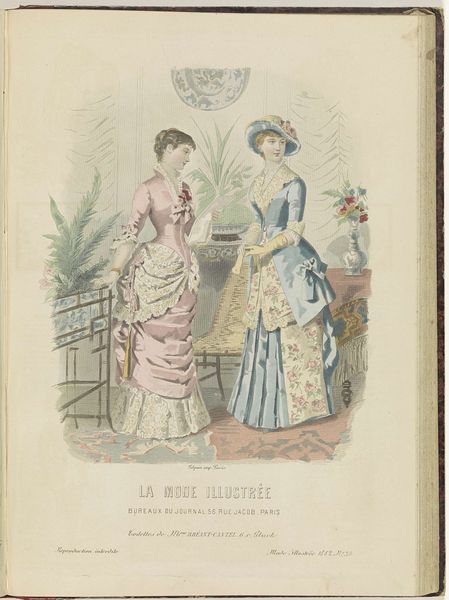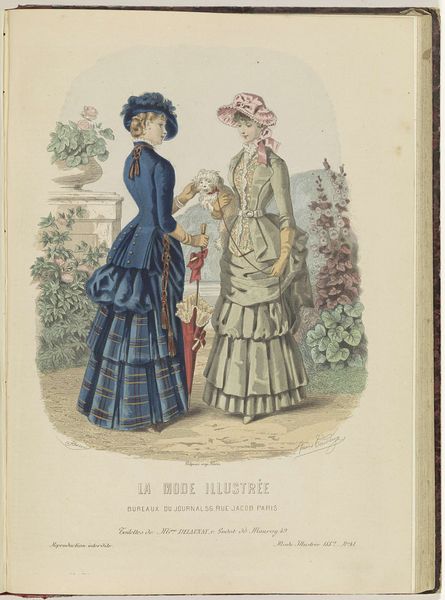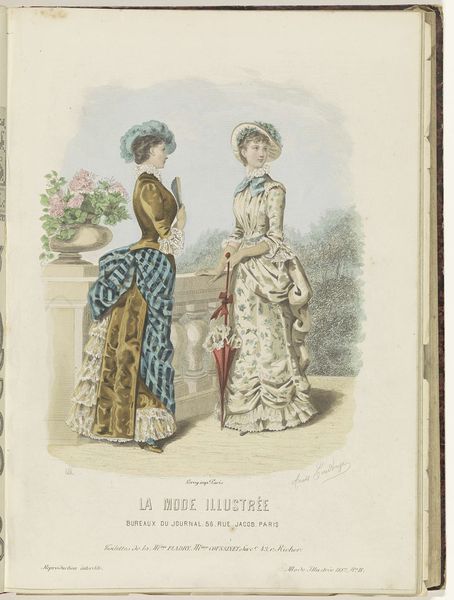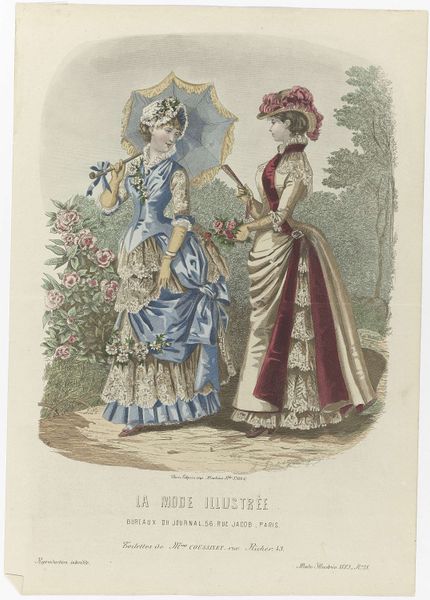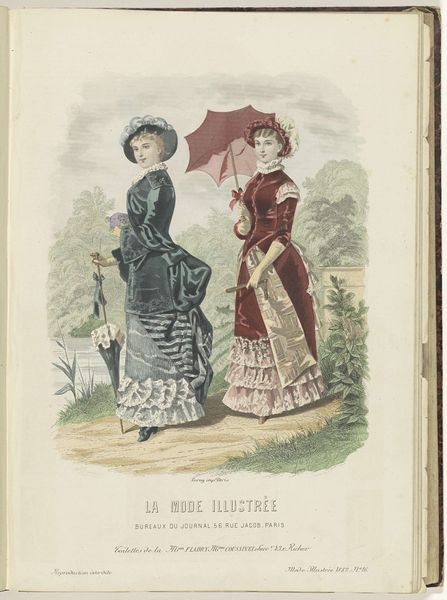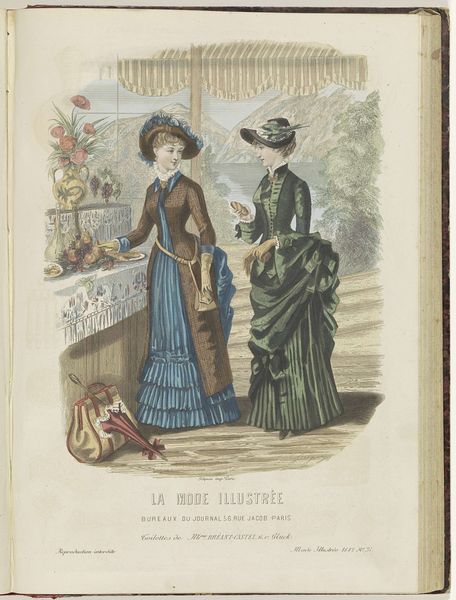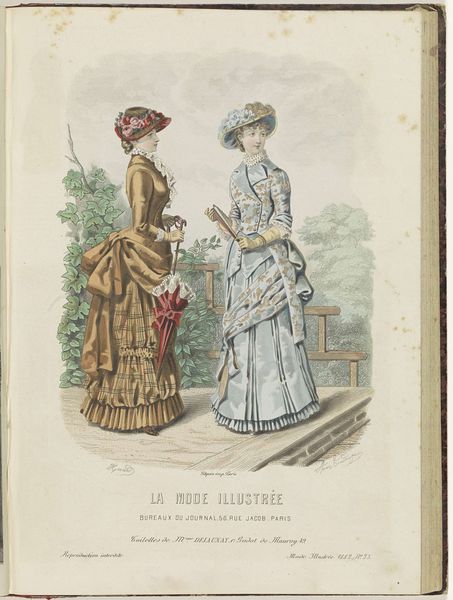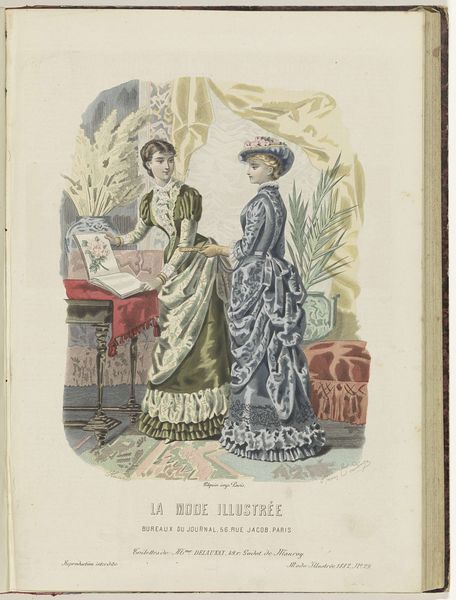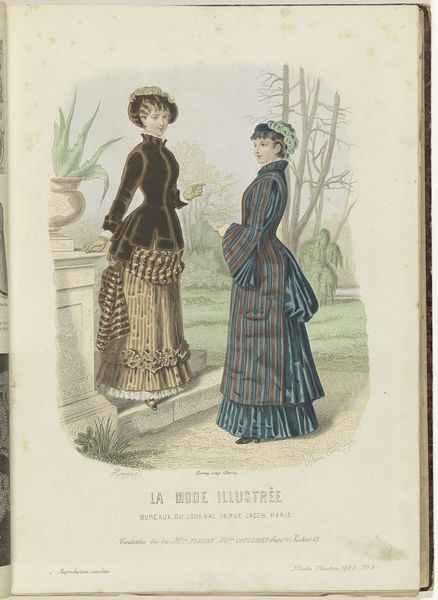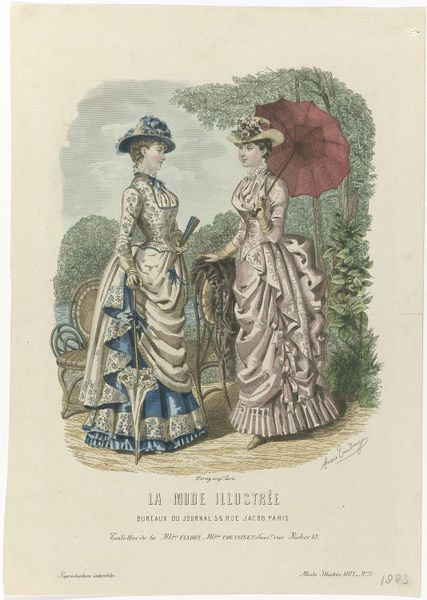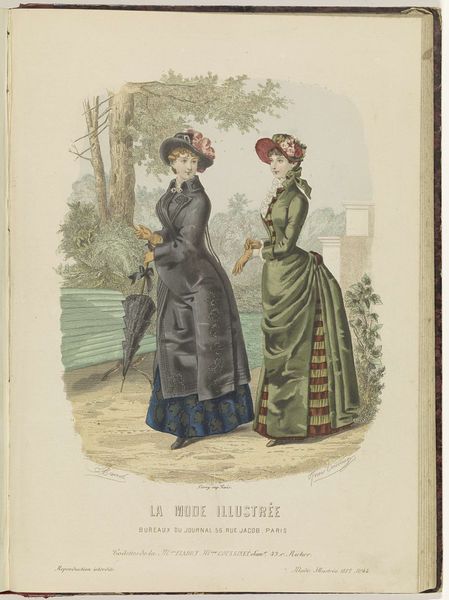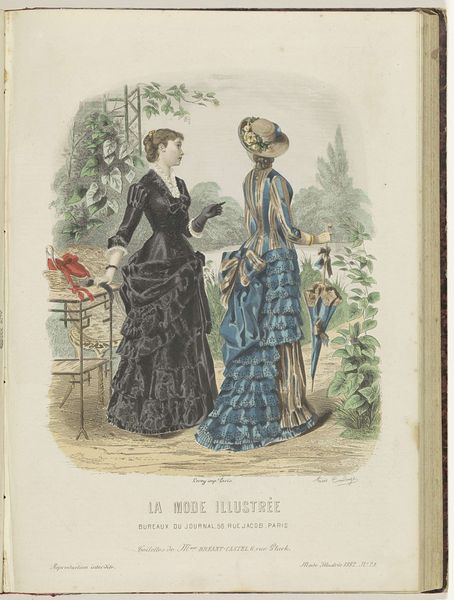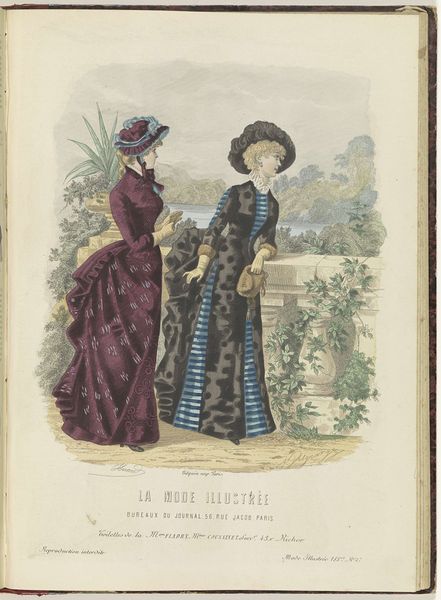
Dimensions: height mm, width mm, thickness mm
Copyright: Rijks Museum: Open Domain
Curator: Here we have an image titled "La Mode Illustrée, Journal de la Famille, 1882," created in 1882 by Firmin-Didot & Cie. It’s currently housed in the Rijksmuseum. What are your initial impressions? Editor: Well, the immediate impact is its visual lushness. The detailing in the fabrics and the garden setting gives it an air of romantic, almost excessive, femininity. There’s a real sense of artifice. Curator: Absolutely. As a print, likely a chromolithograph, its value lies in its mass production and distribution. “La Mode Illustrée” was a popular journal. So, let's think about the materials, the paper, the inks. What does its accessibility say about the shifting landscape of consumer culture at the time? How does it shape or reflect the aspirational desires of its readers? Editor: Precisely. Think about the title itself: "Journal de la Famille." It’s not just about fashion, it's about constructing an image of ideal bourgeois family life. These women are positioned within a narrative that dictates their roles, their appearances, and, by extension, their worth in society. Who was invited to be part of that image? Curator: The clothing is so central, almost monumental, don't you think? Look at the technical skill to reproduce these layered textures in a print for mass consumption. It reflects a very high degree of craftsmanship in the service of... well, fashion. Consider the labor involved—from the dressmakers to the printers—all contributing to this image of leisure. Editor: Yes, the attention to detail naturalizes a highly constructed and gendered image of beauty. And notice how the setting—the garden, the flowers—reinforces this connection between women and the natural world, but it’s a controlled, cultivated nature, mirroring the control exerted over women's bodies and lives. It whispers assumptions about the domestic sphere being women's primary, and perhaps only, space. Curator: Looking at the image in its totality, considering both content and the means of production really forces a new way to evaluate it. It becomes something more profound than a simple document of clothing styles. Editor: Indeed, seeing beyond the surface elegance and acknowledging the forces at play offers a far richer, albeit more critical, perspective.
Comments
No comments
Be the first to comment and join the conversation on the ultimate creative platform.
